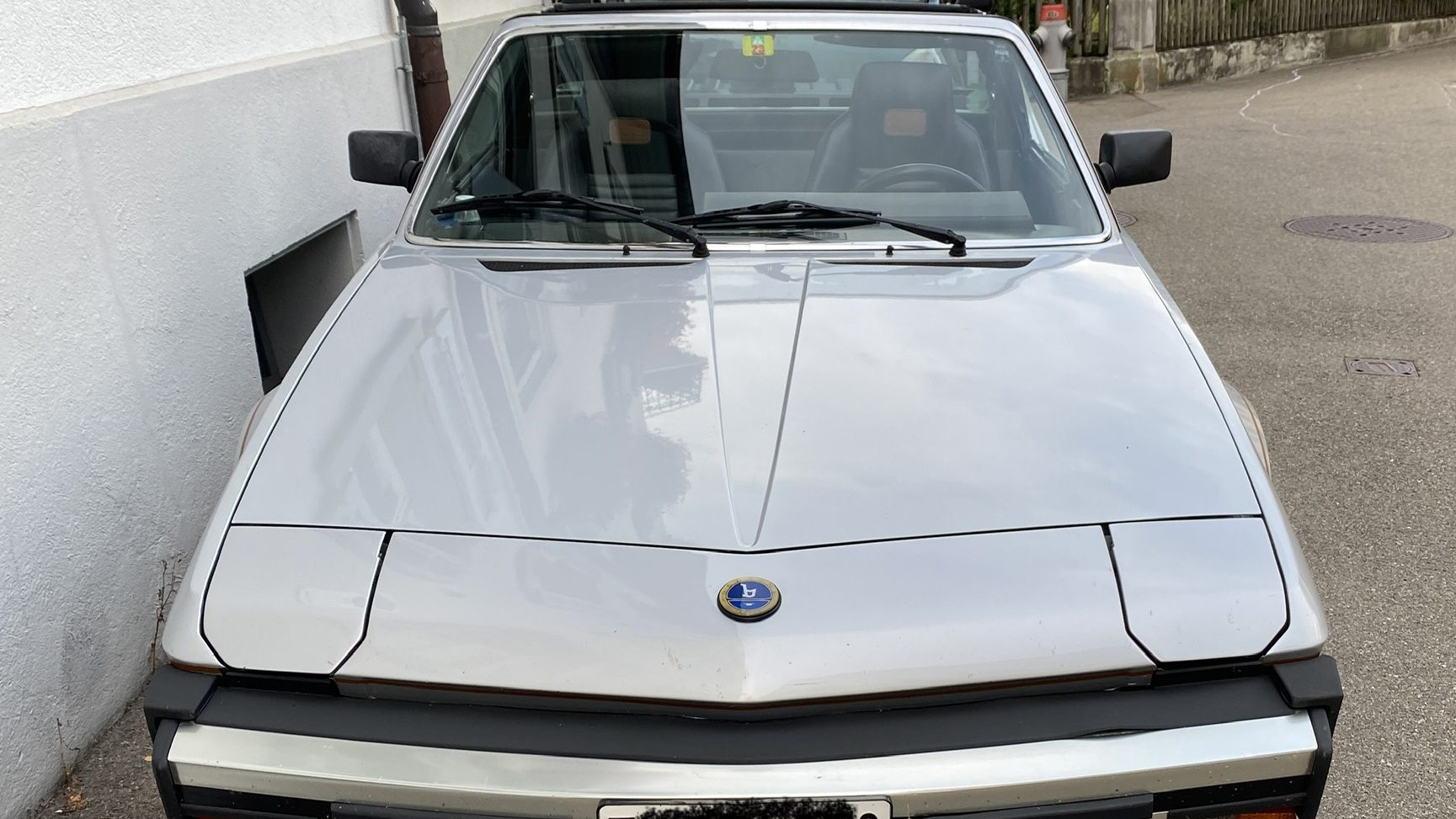It’s not only the times that are a’changin, as Bob Dylan noted long ago, but last week in central Europe, very much the weather as well. We thus went from several weeks of wonderful summer days and late dinners on the terrace, to 12-13 degrees C and rain. Luckily things are set to improve, however to something more reminiscent of autumn by the looks of it, so I guess I was very lucky to spot a surprisingly exotic street find just before the weather change – the nowadays very rare Fiat X1/9. It’s no doubt a car that is best enjoyed in the summer, but it’s also a great testament to Bob Dylan’s changing times, as we’ll see!
The Fiat X1/9 is also very much the flashy family member in an otherwise quite boring group of 60’s and 70’s Fiat cars. It’s the successor to the Fiat 850, a four-cylinder, 60’s creation that looked like a bun (although to be fair, the Spider looked better than the coupé…). But it also belongs to the Fiat 128 family where the rights to the four-door sedan were later sold by Fiat to Soviet Lada, and which most therefore associate with old east-west spy movies.
Contrast both of those with the very futuristic X1/9, and it’s not only the model name that stands out. The angular design with the pop-up headlights was a design that would be if not copied, then definitely repeated in many other 70’s cars, such as the Lotus Esprit and of course the Lamborghini Countach. The X1/9 didn’t look anything like the rest of the family, but somewhat surprisingly Bertone had still designed all siblings, proving design houses can have good and less good days.
As spectacular as the looks was the fact that the engine was right behind the seats, making the X1/9 Fiat’s first mid-engined car. Unfortunately though, that engine came from the boring part of the family, meaning at the launch in 1972 a 1.3 liter, 4-cylinder with a very modest 75 hp, coupled to a 4-speed manual box. In 1980 that grew to 1.5 liters, another 10 hp and five gears. Of course, at around 900 kg it’s fair to say that they X1/9 was a light-weight, but I think we can safely conclude that it looked about five times faster than it really was. That was of course especially true in the US, where emission regulations made the engines even weaker than in Europe.
It wasn’t only emission standards that became strict on in the 70’s, the same was very much the case for safety, again especially in the US. Fiat had actually built the X1/9 with North America in mind and had thus tried to adapt to the coming rules during the development process. Thanks to the mid-mounted engine and the targa body rather than a full convertible, the X1/9 was one of very few cars had no problem complying with what became the new US safety standards.
This gave Fiat’s faltering US a welcome boost, especially since the small coupé was far cheaper than other, somewhat comparable sports cars. Everything was going swell until the mid-70’s when those safety standards were developed further, forcing Fiat to fit what must be the ugliest bumpers in automobile history to the X1/9. Luckily these were later re-adapted to what can be seen on my street find, which is most probably a US import. Around 165.000 X1/9’s were produced in total between 1972 and 1988, and no less than 3/4 of those were sold in the US.
As observant readers may have noticed on the first picture, the logo isn’t that of Fiat, but rather of designer Bertone. The reason is to be found back in 1982, when Fiat wanted to discontinue the X1/9 and pull out of the US market, and Bertone therefore bought the rights and continued to produce the car in its name all through 1988. Not much changed on the car in the last years but Bertone would improve both equipment and materials, making the Bertone-branded cars such as the one I saw, the most attractive ones.
So what about the changin’ times? Quite obviously, it’s the concept of a sports car weighing in at less than a ton, making even a small, 1.5 litre engine with less than 100 hp if not plenty, then at least enjoyable enough. This is obviously very far from where we are today and if it sounds like your thing, you may think that with 165.000 cars produced, finding one will be easy. That’s however not the case as very few have survived – estimates talk about less than 1.000 cars in the US. Few are thus up for sale, but those that are tend to come in around EUR 15-20.000 in Europe.
The only question left to solve is then that around the name, because for a company who have typically been naming cars with real names or with numbers relating to the engine size, how did X1/9 come about? It turns out that prototype cars at Fiat were called X1, with the second number indicating the prototype in the order it was developed counting from a certain start date. The small Autobianchi A112 was for example called X1/2 as prototype, and the X1/9 was thus prototype number nine. It was however the only model to retain the prototype name in actual production and why that was, no one seems to know. But who cares? With the wind in your hair and the humming of a four-cylinder right behind you, you’ll have better things to think about!




